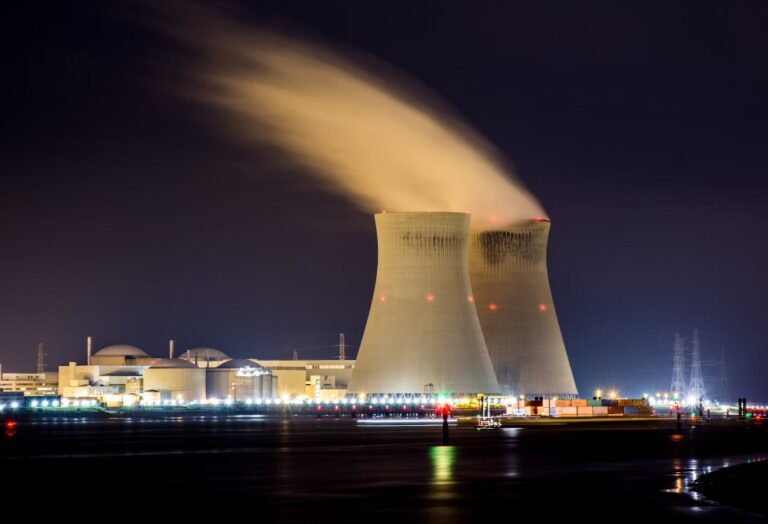As technology advances every day, the structure of nuclear power also witnesses a dramatic change, imbibing these innovations. From the 1st generation nuclear reactors, which used water as the coolant and presently to the 4th generation, which plans to utilize water, molten salt, liquid metal and helium, the reactor technology has indeed improved.
The 4th generation of nuclear power can be termed as a new set of nuclear reactors that provide the possibility of higher and more efficient energy than in the past. In addition, the 4th gen nuclear power is also expected to considerably reduce radioactive waste.
These reactors are still under research and study in the structure of the “Generation IV International Forum” (GIF) and INPRO- Innovative Nuclear Reactors and Fuel Cycles.
Table of Contents
Understanding 4th generation nuclear power
IV generation nuclear reactors are expected to undergo sophisticated technological changes that will forever alter how this energy sector is perceived. There are specific requirements a nuclear system must clear before being deemed as a Generation IV. They are as follows:
- The structure must be more fuel-effective than what is presently witnessed in the plants;
- The system must be designed to protect or safeguard the surroundings and people from any immediate harm In case of an earthquake or an internal system failure;
- The fuel cycle of the system must be designed in a method that prevents anyone from making nuclear weapons.
Although China has kickstarted the utilization of fourth-generation reactors in December 2021, most countries are yet to join the bandwagon. These advanced nuclear reactors would possess superior quality designs, materials and cooling structures. These qualities, in turn, would also be more sustainable, flexible and cost-effective than their previous counterparts.
Another important requirement that fourth-generation nuclear reactors need to fulfil is they need to manufacture more fuel than they consume and also annihilate any long-lived radioactive element present in the reactor during the process.
Features and benefits of 4th generation nuclear power
Fourth-generation nuclear power plants are specifically made to be better, safer and easier to handle than their previous counterparts. Here, the reader is expected to understand its interesting benefits and features.
Features
- Environmental feasibility: IV-generation nuclear systems are designed to generate decreased quantities of radioactive waste. They also possess the capability to incinerate existing radioactive waste.This quality increasingly contributes positively to the environmental factor;
- Increased efficiency: These sophisticated nuclear systems contain a higher chance of conversion rates. To put it simply, it means it converts nuclear fuel to electricity by taking in the same quantity of fuel but producing more energy;
- Safety factor: These reactors are expected to possess advanced safety qualities that prevent any immediate, large-scale disaster from taking place. Most of humanity is apprehensive about the dangers of such power energy sources. The safety factor adds more confidence in the application of its uses.
Benefits
- Low-carbon: Nuclear reactors from 4th generation practically generate no greenhouse gases that can be harmful to the environment;
- Flexible in nature: It is highly flexible, economical and adaptable in nature. The present nuclear reactors have certain limitations in these aspects, and the 4th generation nuclear reactors are about breaking these barriers and being more dependable;
- Long-term use: As the energy demands increase and awareness towards sustainable methods of procuring energy increases, IV generation nuclear can help fulfil this demand.
How do 4th generation nuclear reactors work?
In nuclear technology, the 4th generation capitalizes on the heat energy liberated through the process of atom splitting. This phenomenon is known as fission. The controlled splitting of specific atoms serves as the catalyst for electricity generation. The energy unleashed in this intricate fission process is harnessed to produce heat, manifesting either in the form of water or gas. Subsequently, this intense heat is employed to generate steam.
The generated steam, in turn, becomes the driving force behind turbines, a pivotal component in the electricity generation process. The 4th generation nuclear reactors distinguish themselves by adopting a “closed fuel cycle.” This innovative approach not only expands fuel reserves but also contributes to the reduction of radioactive waste. It marks a significant stride in the evolution of nuclear technology.
Challenges in developing 4th generation nuclear reactors
Just like any advancing technology, fourth-generation nuclear reactors also face certain challenges. Here’s a look at a few of them:
- Energy exploitation: These technologies encourage a better and more sustainable future for humanity. However, it is crucial to notice and put an effort towards stopping the proliferation of these energy sources into making bombs, etc;
- Public awareness: Most of the public is into the perception that nuclear energy is a dangerous threat to humanity. It could be the cause of our destruction. This misconception is important to address by notable bodies of governance, where they address the concerns and build a collective trust with the public;
- Price: As sophisticated as these technologies get, the cost also goes in an upward direction. Although the IV gen nuclear reactors are still in the research stage, the process of their deployment will manifest formidable challenges.
Future prospects
The future looks brighter and better for the 4th generation of nuclear reactors, a tech that inspires sustainability. With the growing threat of greenhouse gas emissions casting a shadow over the world, nuclear energy can be an excellent replacement that could reduce carbon footprint.












